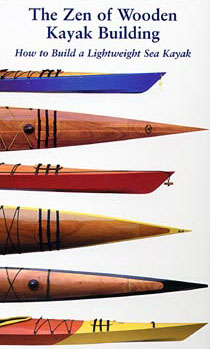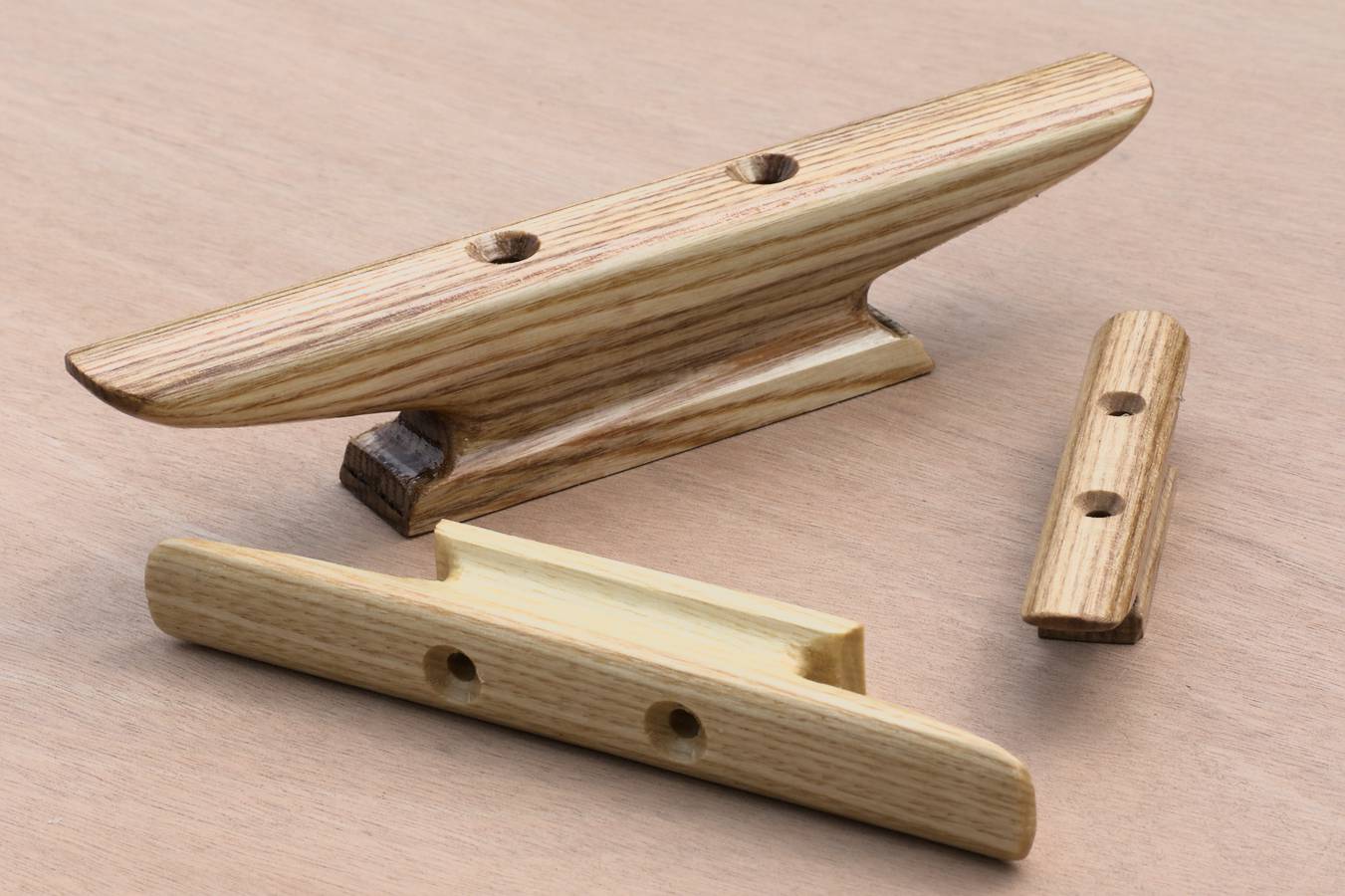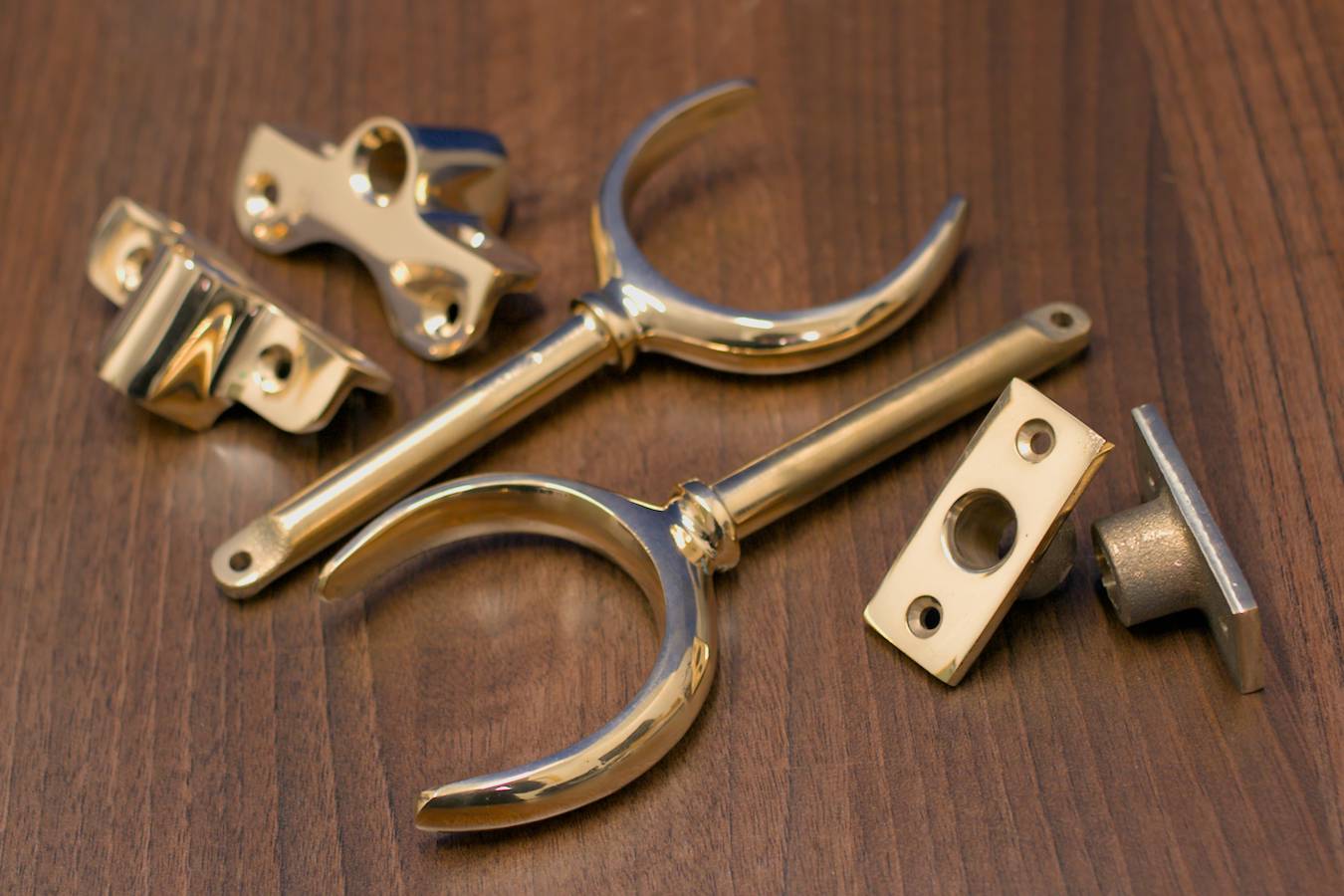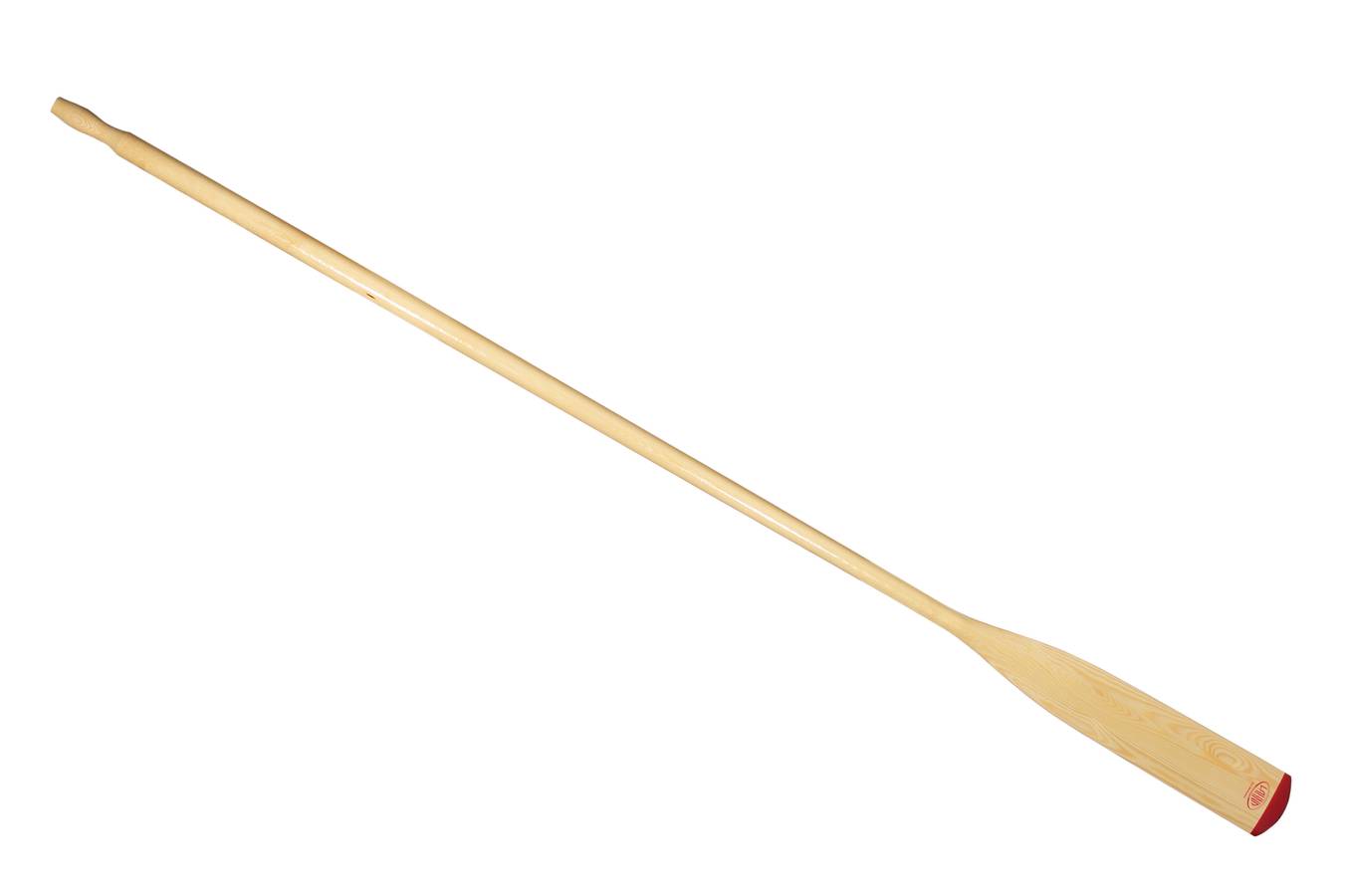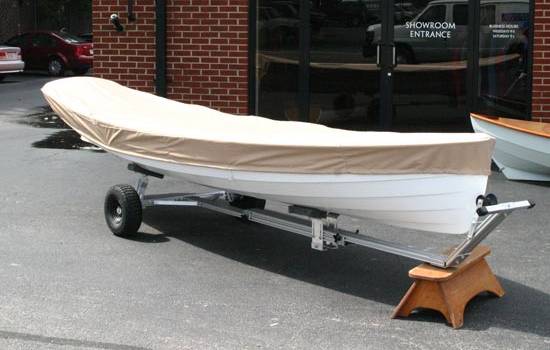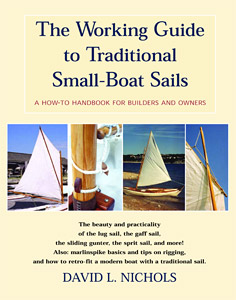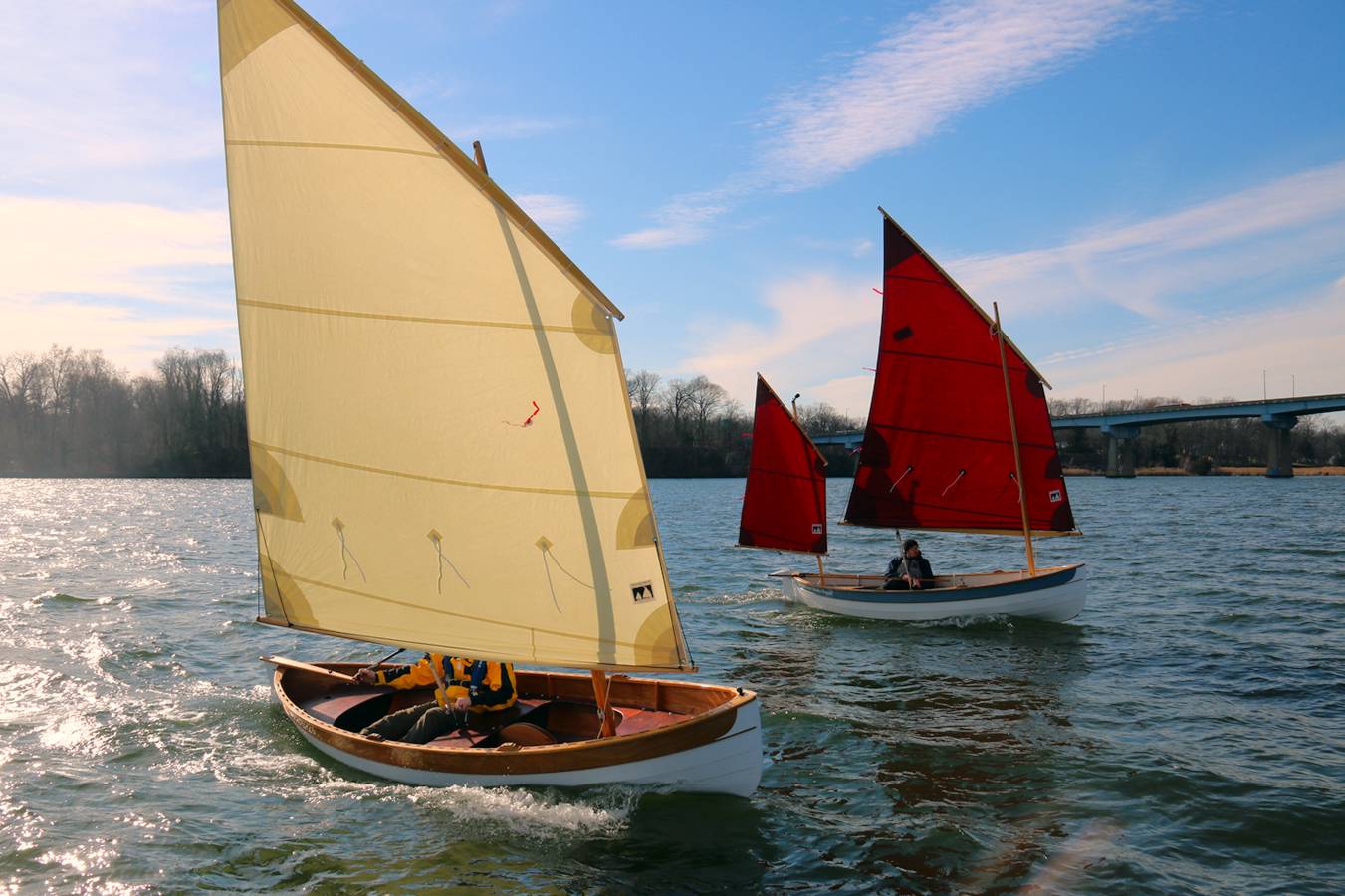

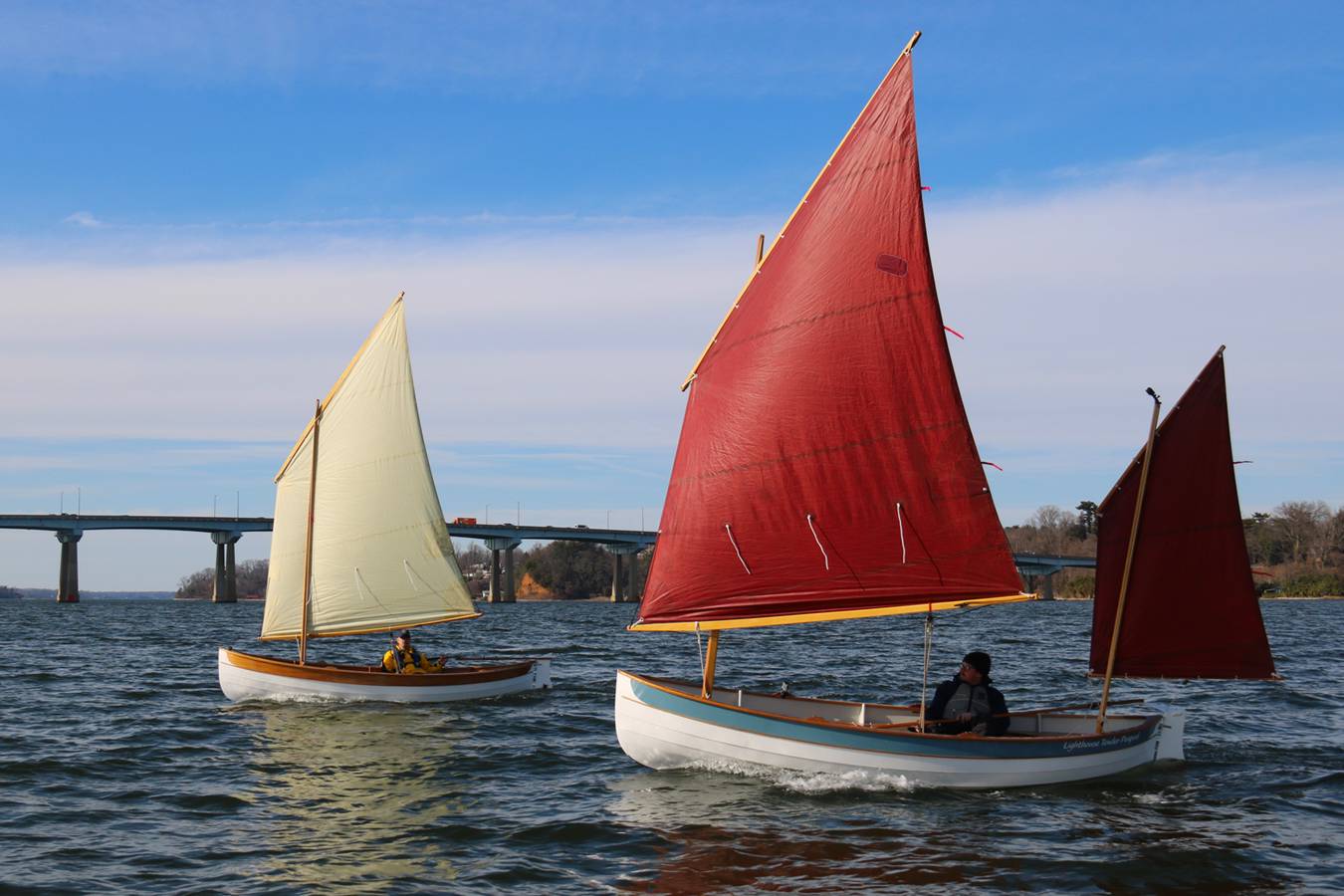
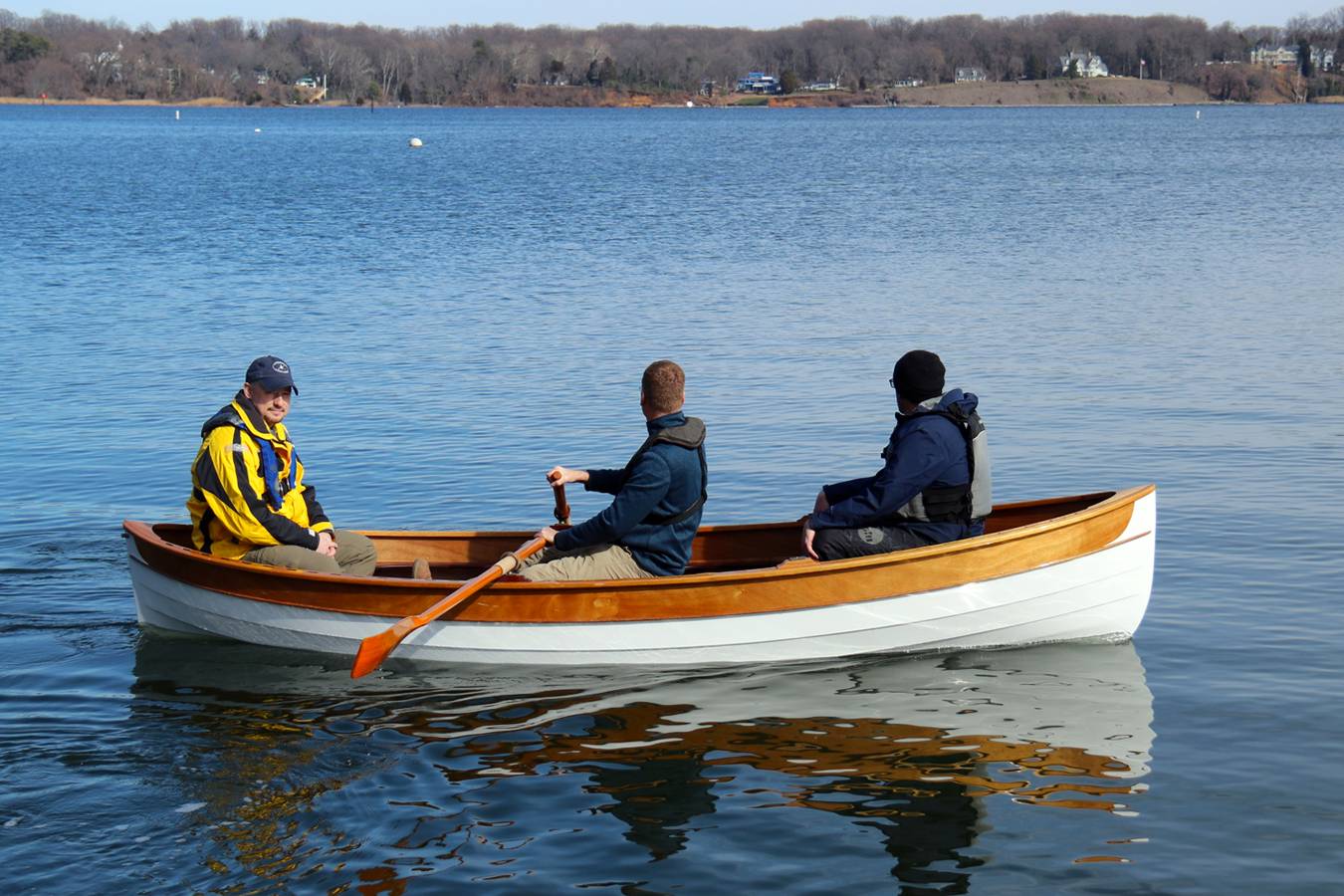
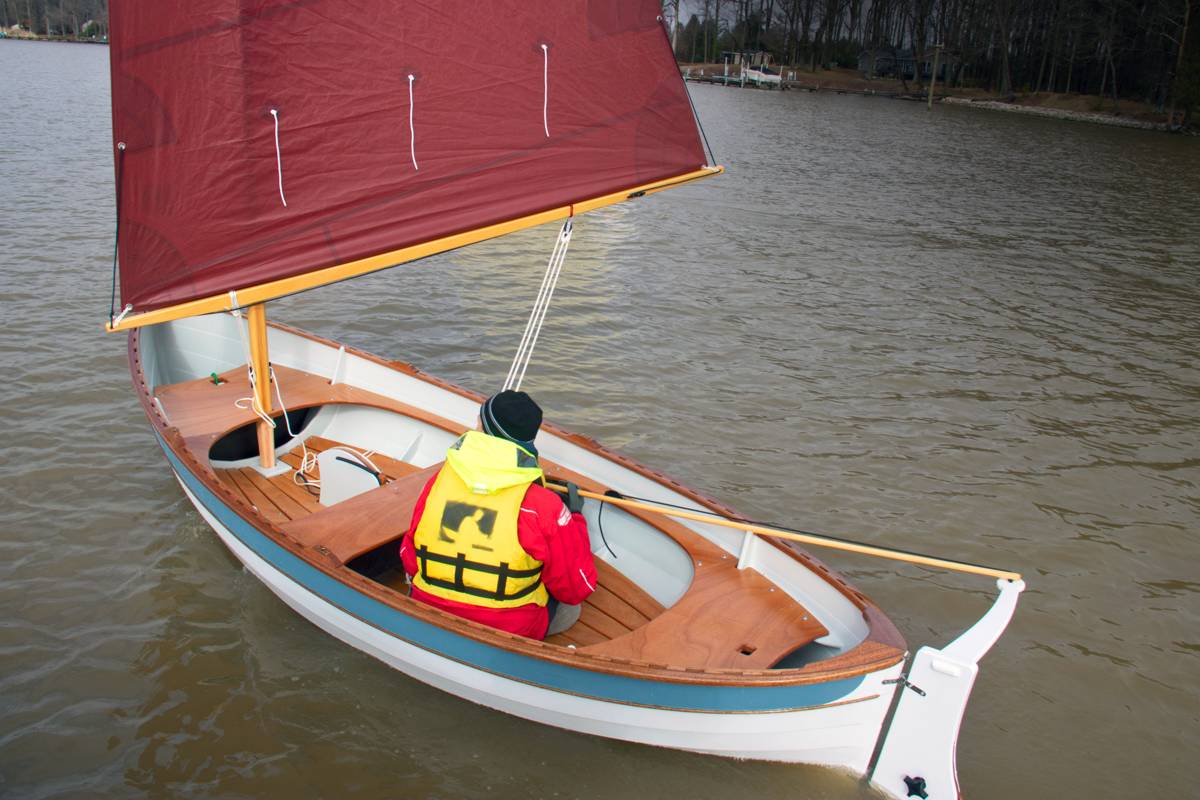
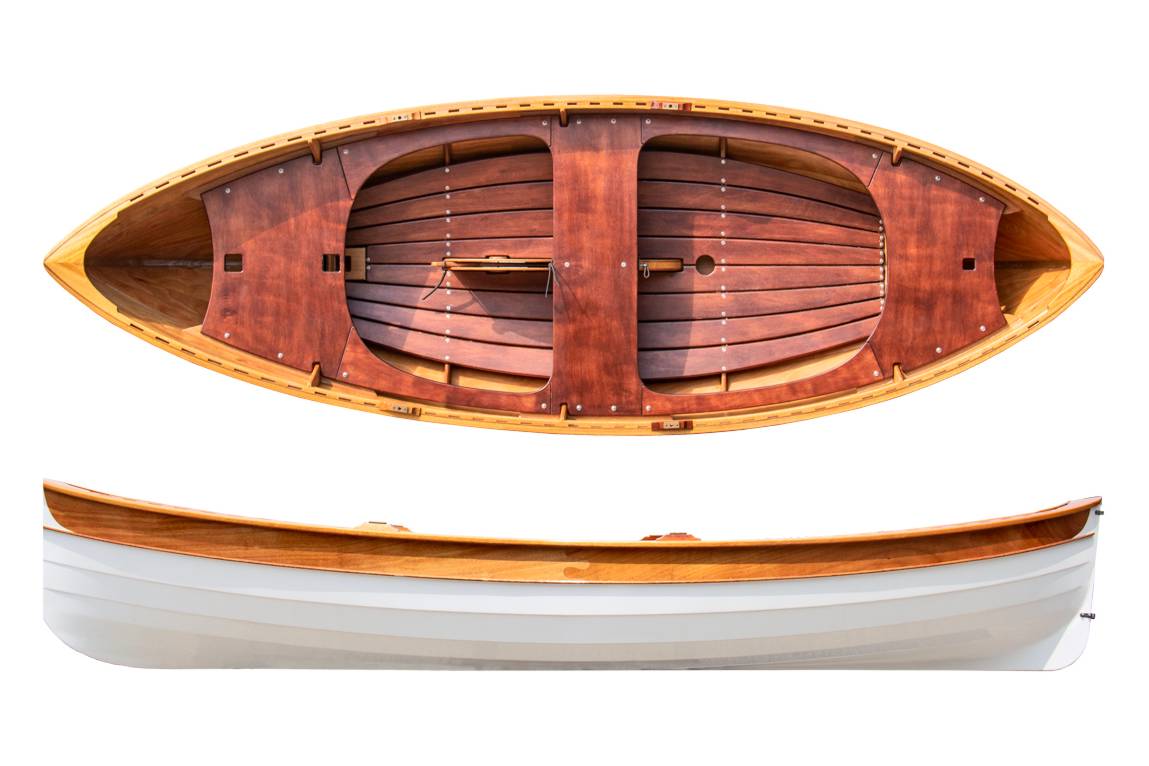






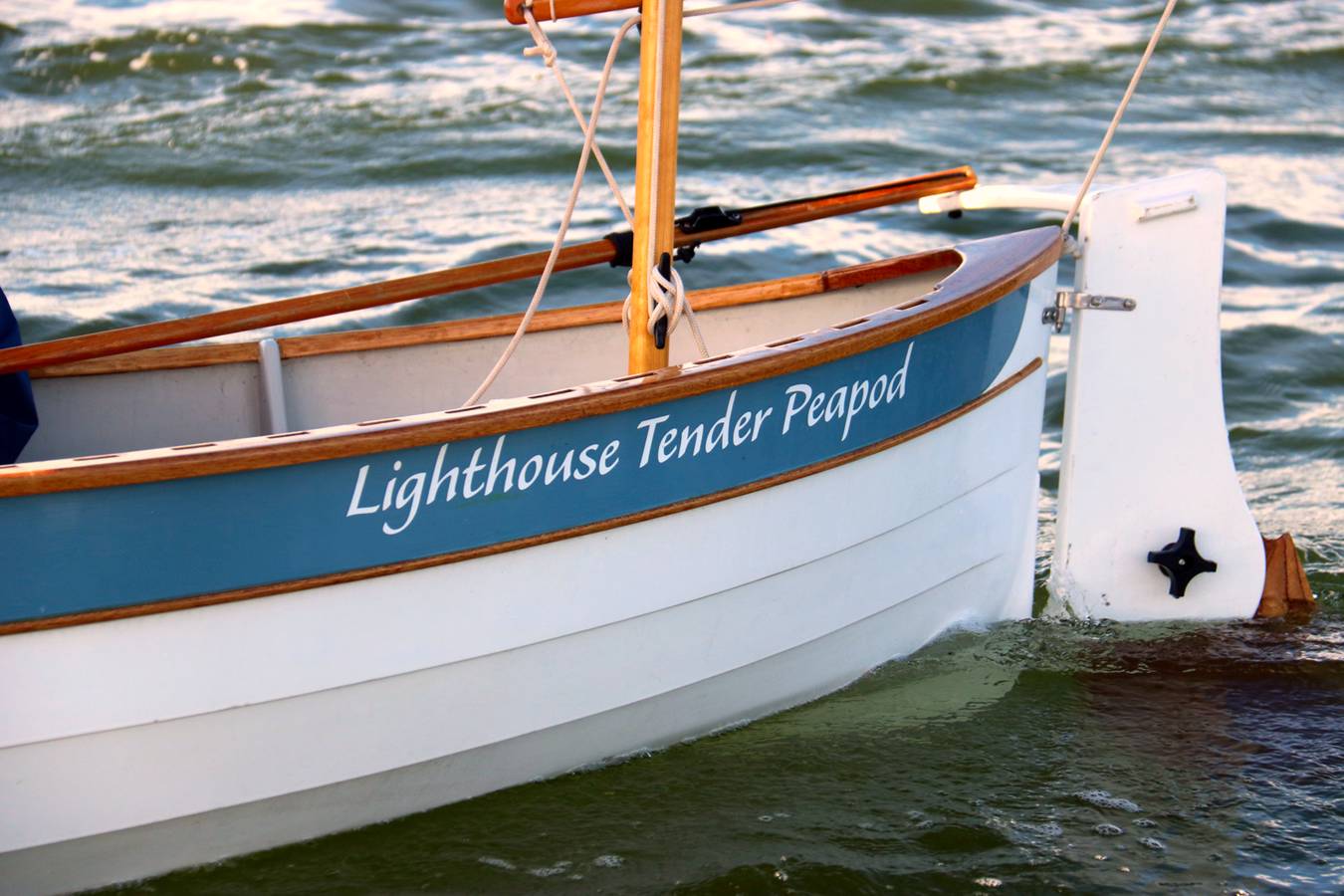
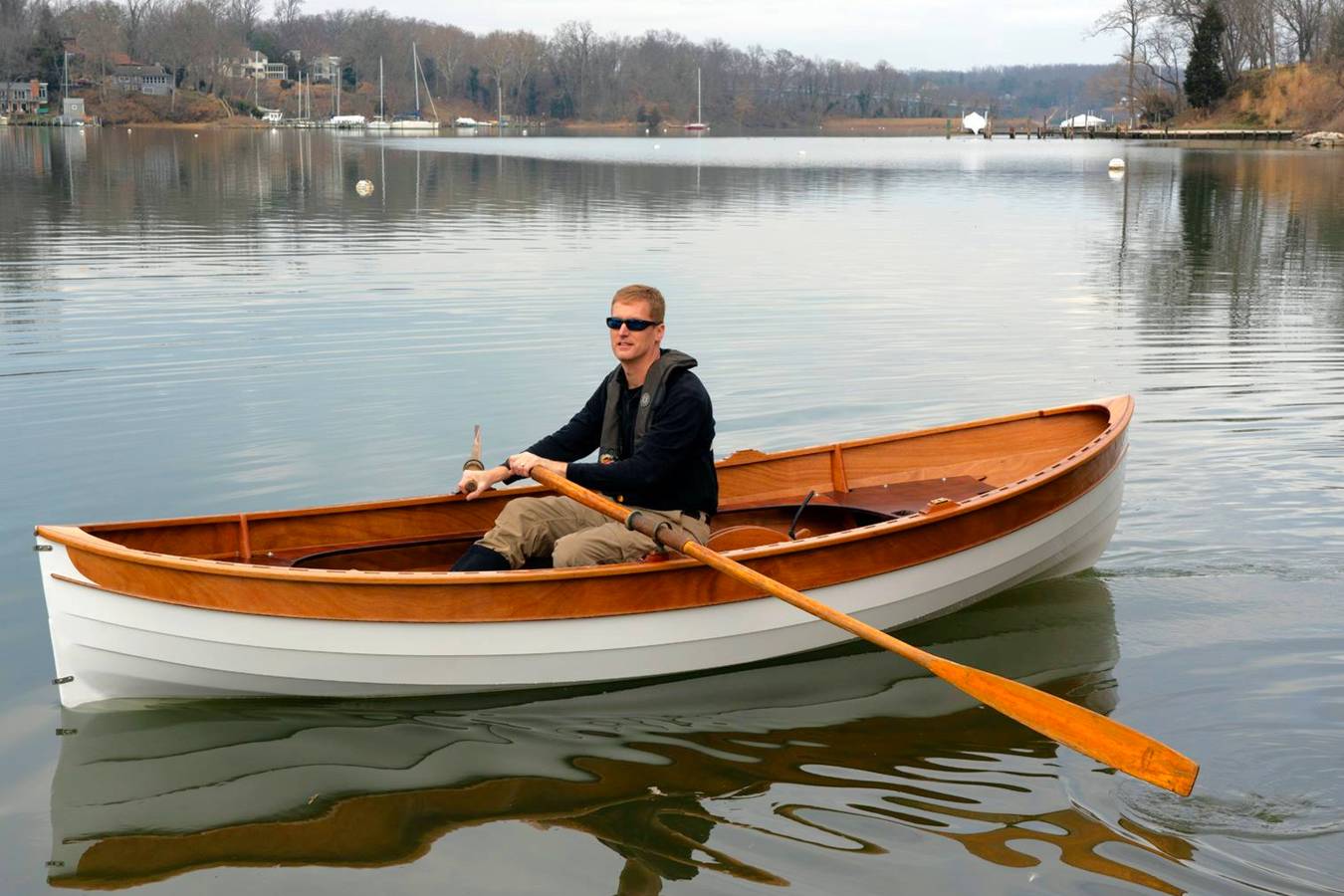
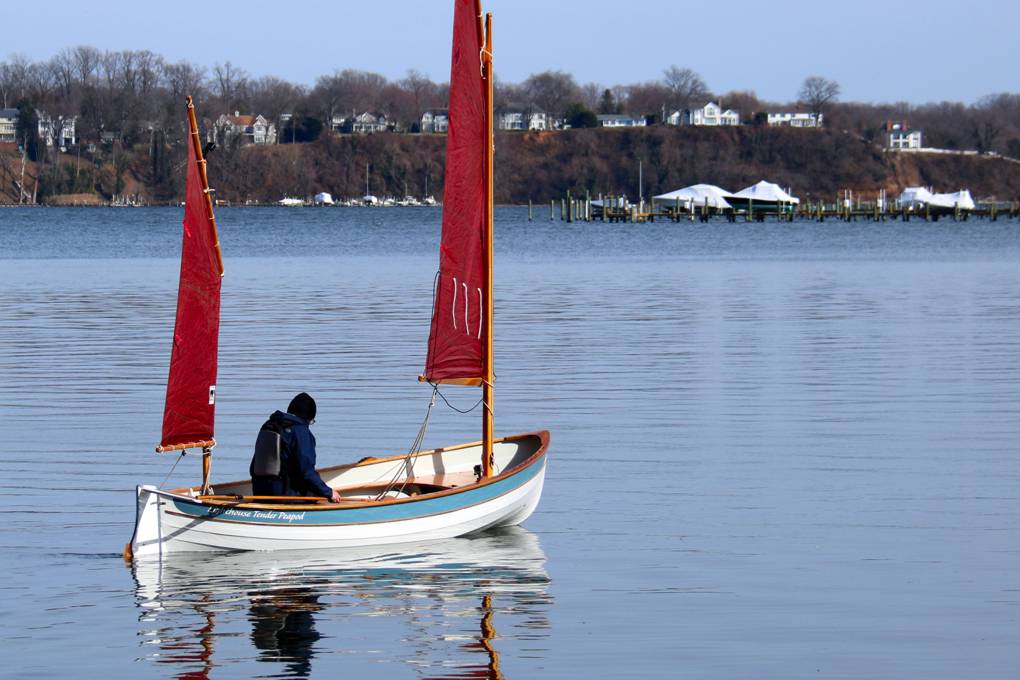
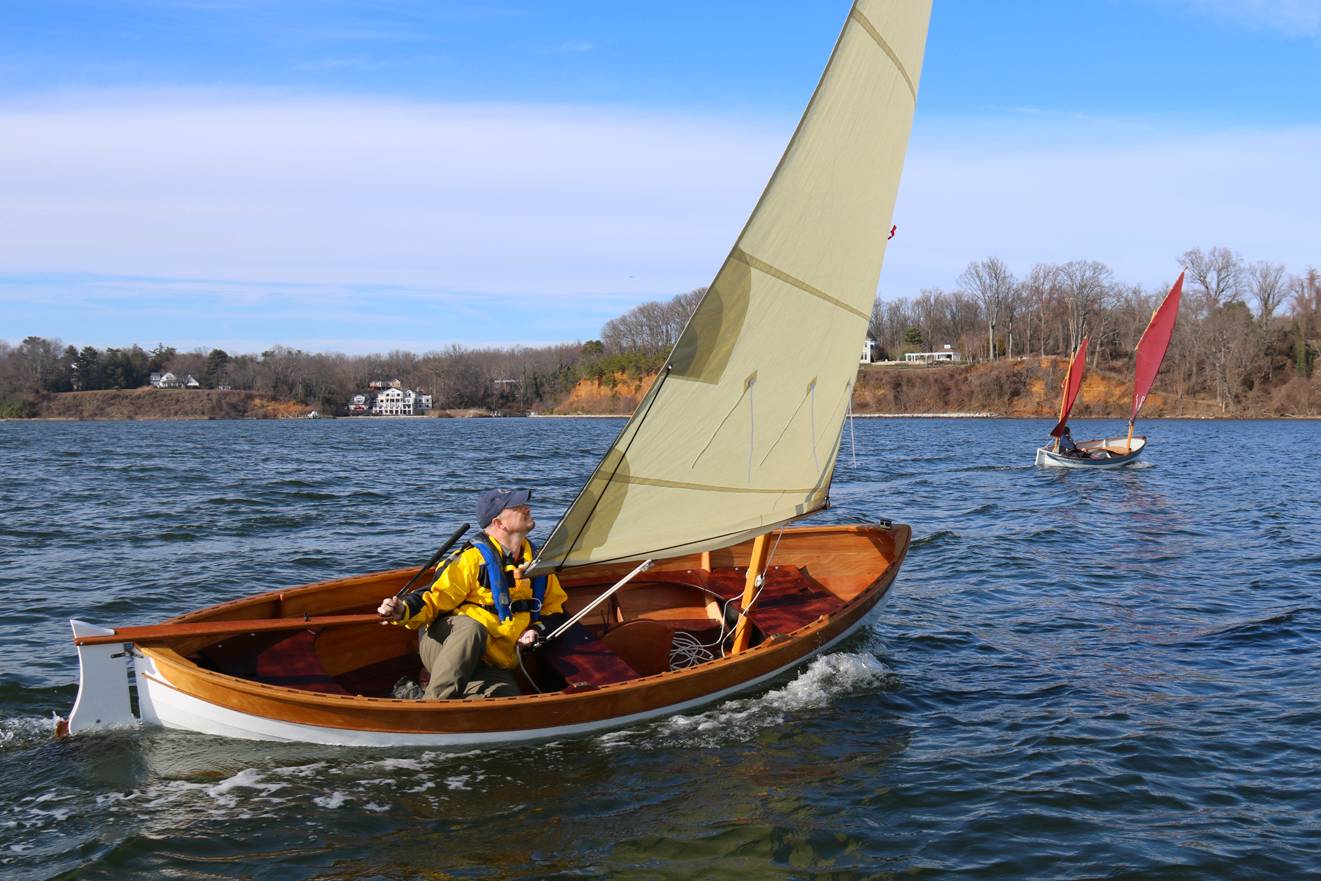
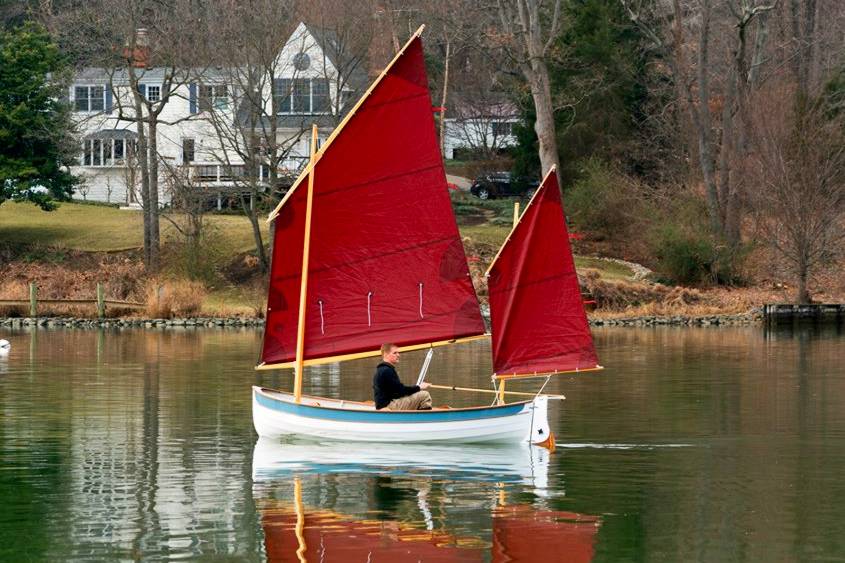
Product Description
The Lighthouse Tender is an advanced stitch-and-glue boat kit based on the Maine Peapods: small, double-ended rowing and sailing boats traditionally used for lobster fishing and general utility such as tending lighthouses. More recently, the peapod type found a new life as a pleasure boat.
A feature of the traditional peapod that was essential to its use as a working boat was the stability that allowed the crew to stand and retrieve heavy lobster pots over the side. It was also important that they rowed well, though over longer distances the boats would be sailed.
Designer John C. Harris of Chesapeake Light Craft was inspired by the ‘Old Sailing Peapod’ recorded by Howard Chapelle in American Small Sailing Craft, an indispensable reference work of traditional boat designs. That boat was built in about 1886 and its hull shape recorded by Chapelle in 1937.
Translating the subtle shape and character of a traditional peapod into a stitch-and-glue design that can be built easily without a mould or complex joinery was no easy task. It took nearly twenty years before John could finally realise his vision of a stitch-and-glue peapod without any compromise in the traditional hull shape.
‘You'd never guess it, but the Skerry design was my first hack at a peapod, way back in 2000’, John says. ‘At the time, however, getting plywood to bend into such a complex shape was out of reach of available design technology. Instead, the Skerry developed into a cousin of the round-sided dory – a simpler, though no less attractive shape. It was a happy accident, as the Skerry ended up really light and really quick to build, like a dory, and became one of the most popular boat kits of all time’.
CAD/CAM has come a long way since then. CLC's Tenderly Dinghy was a breakthrough, John says. ‘There isn't the slightest compromise in that boat's traditional hull shape for the sake of construction ease. It's an absolutely free-form shape, unconstrained by the need to be shipped out as a pre-cut boat kit. Show a Tenderly Dinghy to a professional boatbuilder unfamiliar with the design, and they'll assume it was assembled using complex traditional techniques’.
John could have his stitch-and-glue peapod at last.
Two prototypes were built and intensively photographed for the full-colour step-by-step instruction manual.
The Lighthouse Tender is stable and easily-driven under oars, thanks to its traditional peapod hull shape. It can also carry a heavy load of 650 lb: 45% more than the Skerry, which is a longer boat by 18″.
Sailing Rigs
A choice of two sailing rigs were designed for the Lighthouse Tender: a single balanced lug sail and a cat-yawl rig with two lug sails. Three mast steps are built into the base hull kit so that either rig can be added to the boat at any time.
The boat has a traditional pivoting centreboard and a kick-up rudder for shallow water. The single lug rigged version uses a standard tiller and the yawl uses a traditional push-pull tiller.
Thorough testing of the two prototype hulls showed little difference in performance between the two sailing rigs. The single lug sail is perhaps slightly faster upwind in light air, while the cat yawl may be slightly faster offwind in heavy air. In practice, the differences are very small.
The simplicity of the single balanced lug sail means faster setup at the shore, as well as less weight and windage and fewer spars to build.
On the other hand, the cat yawl is easier to heave-to in rough conditions and allows very fine-tuned sailing balance. The mizzen makes a nice riding sail at anchor or in a squall. It's very easy to shorten sail in the yawl by stowing the mizzen mast and moving the main mast back to the middle mast step. The two masts also make it easy to rig a tent over the cockpit for camp-cruising.
The Lighthouse Tender is a pleasure to sail in all conditions: stable but fast, well-balanced and easy on the helm. A cruising speed of around 5 knots has been observed in 10-12 knots of wind – an excellent showing for a 13′5″ boat.
The kit includes:
- Pre-cut wooden panels with pre-cut joints, pre-drilled tie holes and panel location marks
- Solid wood for broken inwales and breasthooks
- Centreboard case
- Three mast steps
- CNC-cut plywood floorboards
- Cyanoacrylate glue (industrial superglue) and accelerator for rapid assembly
- Epoxy resin and activator
- Epoxy fillers
- Copper ties
- Woven glass fabric
- Woven glass tape
- Pair of silicon bronze rowlocks and sockets
- Comprehensive building manual
- Free technical support from a competent builder
This kit has a higher number of parts than most of our boats, so expect to spend about 200 hours to complete the boat with a yacht-like finish.
Wood only
This option contains only the pre-cut plywood and solid wood components plus the building manual. This is for people who have their own supply of epoxy, fibreglass and hardware.
Sailing upgrades
The centreboard case and three mast steps are included in the base kit, so either of the sailing upgrades can be added during the initial build or after a few years rowing. Please note that the base kit (or a completed hull) is needed in addition to the sailing upgrade.
Each sailing upgrade includes:
- Sail (or two sails for the yawl rig) with one row of reef points in the mainsail
- Mast blank/s
- Boom blank/s
- Yard blank/s
- Centreboard blank
- Fittings
- Kick-up rudder blank
- Tiller blank (standard tiller for the single lug rig, push-pull tiller for the yawl rig)
The sailing upgrades do not include the warp – it is in the rope packages.
Sailing hardware packages
The sailing hardware packages contain all of the hardware associated with the sailing rig, including blocks, cleats, fairleads, padeyes and all the required stainless steel screws for installing the hardware. Please note that some of the brands may differ from those supplied by CLC in the USA but will be of equal or better quality.
Sailing rope packages
The sailing rope package contains all of the line and sail lacing needed to get you sailing once your boat is complete. The package for the single lug rig includes the mainsheet, halyard, downhaul, reefing line, sail lacing and the centreboard uphaul/downhaul. The rope package for the yawl rig additionally includes the mizzen sheet, halyard, downhaul and sail lacing.
Plans and manual (not required by kit builders)
These plans and manual contain sufficient information on the cutting of the panels to make it possible to build the boat from scratch. The plans include full size templates for every piece of the boat. Bulkhead and stitch-hole positions are marked and complete details for the sails and spars of both rig options are included.
The parts-count is higher than some of our designs, so plans-builders should be comfortable reading plans and have access to a full suite of woodworking machinery.
Study manual
The construction manual is also available separately, either printed or as a PDF download, for pre-build study or to help with the decision to purchase. Reading this manual will help you decide whether or not you can build the boat. It is the manual that accompanies the kits.
The manual has 287 pages and is lavishly illustrated with drawings and colour photos covering every step. It includes a materials list, tool list and step-by-step construction details from start to finish.
If, later, you decide to purchase the kit the cost of this printed manual will be deducted from the kit price.
This does not contain the plans of the panels with the cutting instructions so it is not possible to build the boat from scratch using only this.
PDF study manual
The construction manual for the boat is also available as a PDF download. After credit card authorisation a download link will be sent to the email address put on the order form.
PDF study plans
These study plans are intended to give you an overview of the construction of the boat. They are in PDF format that can be viewed using Adobe Reader. There are five pages and they measure 279 × 216 mm (11″ × 8½″). They can be printed for carrying around.
After credit card authorisation the plans will be sent to the email address put on the order form.
When you have studied the plans, your next step might be to order the printed instruction manual, which will walk you through the project step-by-step.


